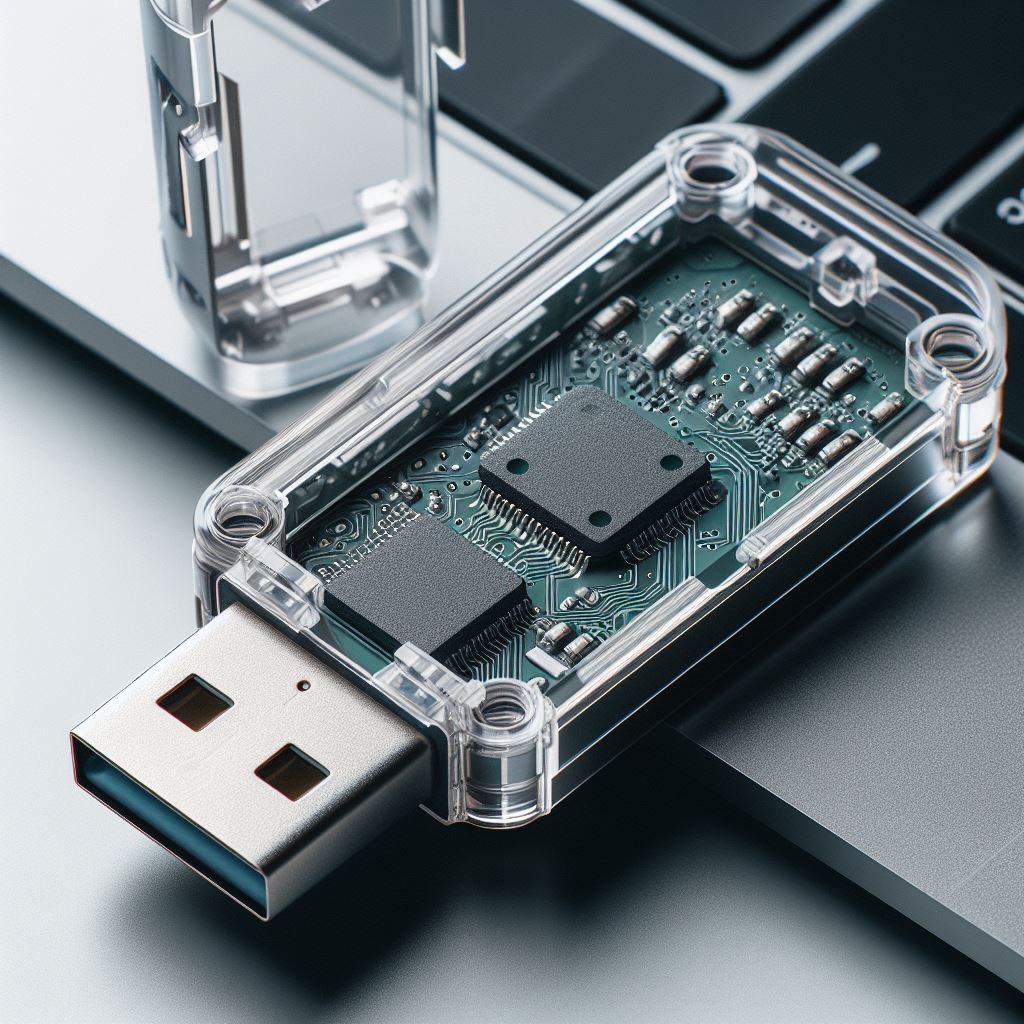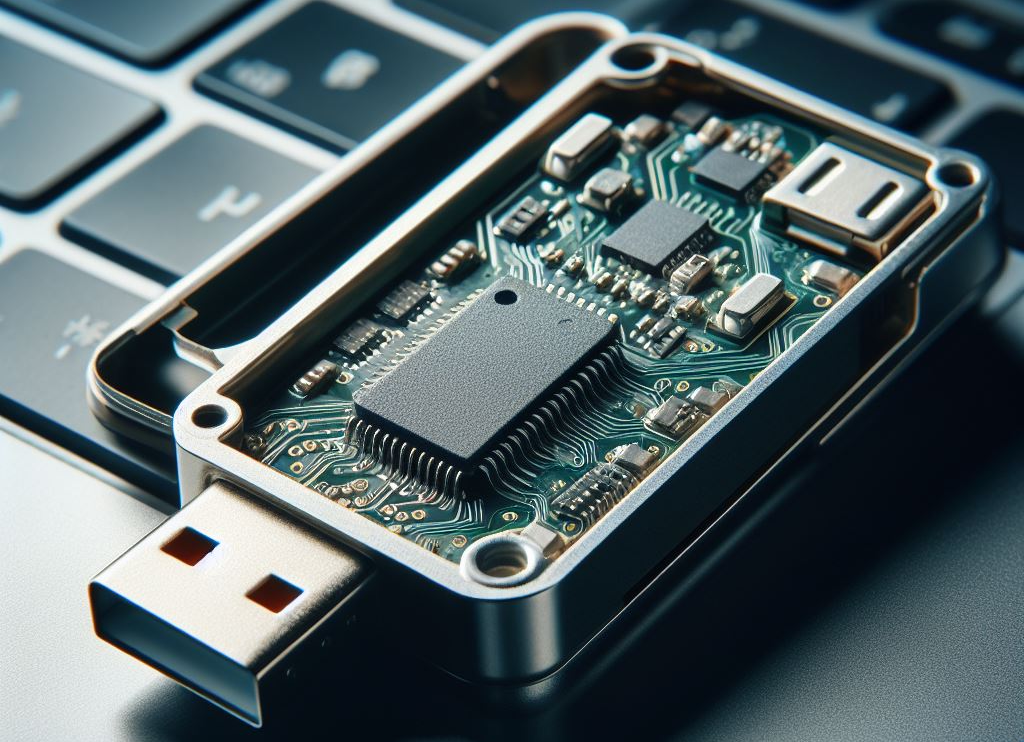The Role of MLCC in USB

Multilayer Ceramic Capacitors (MLCCs) are a type of electronic component widely used in USB devices. MLCCs are made up of multiple layers of ceramic material and metal electrodes, stacked together and then coated to form a compact and efficient capacitor.
In USB devices, MLCC plays a crucial role in ensuring stable and reliable operation. They are used for various purposes, including filtering out noise and interference, stabilizing voltage levels, and providing capacitance to support data transfer and power delivery.
MLCCs are available in a wide range of capacitance values, voltage ratings, and sizes, making them suitable for different USB applications. Their small size and high capacitance make them ideal for use in compact and portable USB devices.

Role of MLCCs in USB Devices
MLCCs play several important roles in USB devices to ensure their proper functioning and performance:
Noise Filtering: MLCCs help filter out high-frequency noise and interference from the power supply and data lines, ensuring that the USB device receives clean and stable power and data signals.
Voltage Stabilization: MLCCs help stabilize the voltage levels in the USB device, ensuring that the voltage remains within the required range for proper operation.
Decoupling: MLCCs act as decoupling capacitors, providing a stable source of power to sensitive components in the USB device, such as the microcontroller or memory, and reducing voltage fluctuations.
Data Integrity: MLCCs help maintain the integrity of data signals in the USB device, reducing the risk of data errors or corruption during data transfer.
Types of MLCCs for USB Devices
There are several types of MLCCs used in USB devices, each with its own characteristics and advantages. Some common types include:
X7R MLCCs: X7R MLCCs are a popular choice for USB devices due to their stable capacitance over a wide temperature range (-55°C to +125°C) and their low equivalent series resistance (ESR), which helps to minimize power losses and improve efficiency.
X5R MLCCs: X5R MLCCs are similar to X7R MLCCs but offer a slightly lower temperature stability range (-55°C to +85°C). They are suitable for USB devices that do not require operation at extreme temperatures.
Y5V MLCCs: Y5V MLCCs are characterized by their high capacitance values and low cost. However, they have a more limited temperature stability range (-30°C to +85°C) compared to X7R and X5R MLCCs, making them less suitable for USB devices that require operation at extreme temperatures.
C0G (NP0) MLCCs: C0G MLCCs are known for their high stability and low losses, making them ideal for high-frequency applications in USB devices. However, they typically have lower capacitance values compared to other types of MLCCs.
When selecting MLCCs for USB devices, it’s important to consider factors such as the operating temperature range, capacitance value, voltage rating, and size to ensure compatibility and optimal performance.
MLCC Placement in USB Design
The placement of MLCCs in USB device designs is critical to their effectiveness in filtering noise and stabilizing voltage. MLCCs are typically placed:
Across Power and Ground Lines: MLCCs are often placed across power (VCC) and ground (GND) lines to filter out high-frequency noise and provide decoupling for the USB device’s components. Placing MLCCs close to the power pins of integrated circuits (ICs) can help reduce voltage fluctuations and improve performance.
Near USB Connector: MLCCs can be placed near the USB connector to filter noise that may be introduced through the USB cable or connector. This helps ensure that the USB device receives clean power and data signals.
On Data Lines: MLCCs can be placed on data lines (D+ and D-) to help maintain signal integrity and reduce the risk of data errors or corruption during data transfer. Placing MLCCs close to the USB transceiver or microcontroller can help improve signal quality.
Across USB Power Lines: In USB devices that require stable power delivery, MLCCs can be placed across the USB power lines to stabilize voltage levels and reduce power fluctuations.
Proper placement of MLCCs in USB designs is essential to ensure their optimal performance and reliability. Designers should carefully consider the placement of MLCCs based on the specific requirements and characteristics of their USB devices.
Benefits of MLCCs in USB Devices
MLCCs offer several benefits when used in USB devices, including:
Noise Reduction: MLCCs help filter out high-frequency noise and interference from the USB power and data lines, ensuring that the device receives clean and stable power and data signals.
Improved Voltage Stability: MLCCs help stabilize the voltage levels in the USB device, ensuring that the voltage remains within the required range for proper operation. This helps prevent voltage fluctuations that could lead to malfunctions or damage to the device.
Enhanced Data Integrity: MLCCs help maintain the integrity of data signals in the USB device, reducing the risk of data errors or corruption during data transfer. This is especially important for high-speed USB devices that require reliable data transmission.
Reduced EMI: MLCCs help reduce electromagnetic interference (EMI) generated by the USB device, ensuring that it complies with electromagnetic compatibility (EMC) standards and does not interfere with other nearby electronic devices.
Compact Size: MLCCs are available in small and compact sizes, making them ideal for use in USB devices where space is limited. Their small size allows designers to incorporate multiple MLCCs into a compact design without adding bulk.
Overall, the use of MLCCs in USB devices helps improve their performance, reliability, and efficiency, making them an essential component in modern USB device designs.

Tips for Selecting MLCCs for USB Devices
Selecting the right MLCCs for USB devices is crucial for ensuring optimal performance and reliability. Here are some tips to consider when selecting MLCCs for USB devices:
Capacitance and Voltage Rating: Choose MLCCs with capacitance and voltage ratings that meet the requirements of your USB device. Higher capacitance values can provide better filtering and decoupling, while higher voltage ratings ensure compatibility with the USB power supply.
Temperature Stability: Consider the temperature range in which your USB device will operate and select MLCCs with temperature stability ratings that meet these requirements. This helps ensure that the MLCCs will perform reliably under varying temperature conditions.
Size and Package Type: Consider the size and package type of the MLCCs to ensure they fit within the available space in your USB device. Surface mount MLCCs are commonly used in compact USB devices due to their small size and easy installation.
ESR and ESL: Pay attention to the Equivalent Series Resistance (ESR) and Equivalent Series Inductance (ESL) of the MLCCs, as lower values can result in better performance and efficiency in USB devices.
Reliability and Quality: Choose MLCCs from reputable manufacturers known for their quality and reliability. Consider factors such as long-term stability, low failure rates, and compliance with industry standards.
Cost Considerations: Balance the cost of MLCCs with their performance and reliability characteristics to ensure that you get the best value for your investment.
By following these tips, you can select MLCCs that are well-suited to your USB device’s requirements, ensuring reliable operation and performance.
Future Trends in MLCCs for USB Devices
As technology continues to evolve, several trends are emerging in the field of MLCCs that are relevant to USB devices. These include:
Miniaturization: The trend towards smaller and more compact electronic devices, including USB devices, is driving the demand for smaller MLCCs. Manufacturers are developing MLCCs with smaller sizes and higher capacitance values to meet these demands.
High-Frequency Applications: With the increasing use of high-speed data transfer in USB devices, there is a growing need for MLCCs that can support high-frequency applications. Manufacturers are developing MLCCs with improved high-frequency performance to meet these requirements.
Higher Capacitance Values: USB devices are requiring higher capacitance values to support their increased functionality and power requirements. Manufacturers are developing MLCCs with higher capacitance values to meet these demands.
Improved Reliability: As USB devices become more complex and reliable operation becomes critical, there is a focus on improving the reliability of MLCCs. Manufacturers are developing MLCCs with enhanced reliability features to ensure long-term performance.
Environmental Sustainability: With increasing awareness of environmental issues, there is a growing demand for environmentally sustainable materials and manufacturing processes. Manufacturers are developing MLCCs with eco-friendly materials and processes to meet these demands.
By staying abreast of these trends, USB device manufacturers can ensure that they are using the latest MLCC technologies to improve the performance, reliability, and sustainability of their products.
